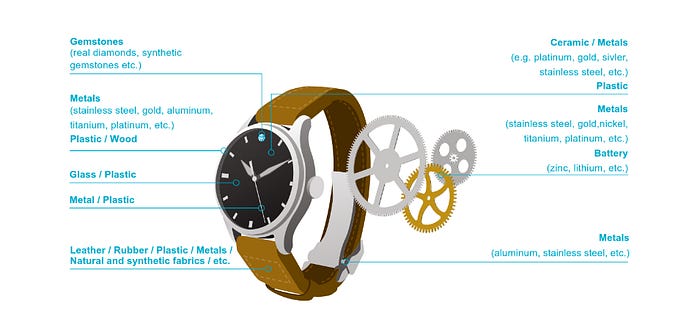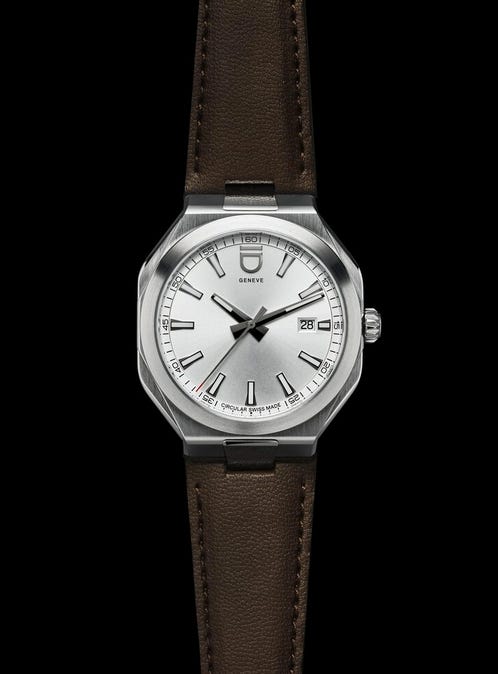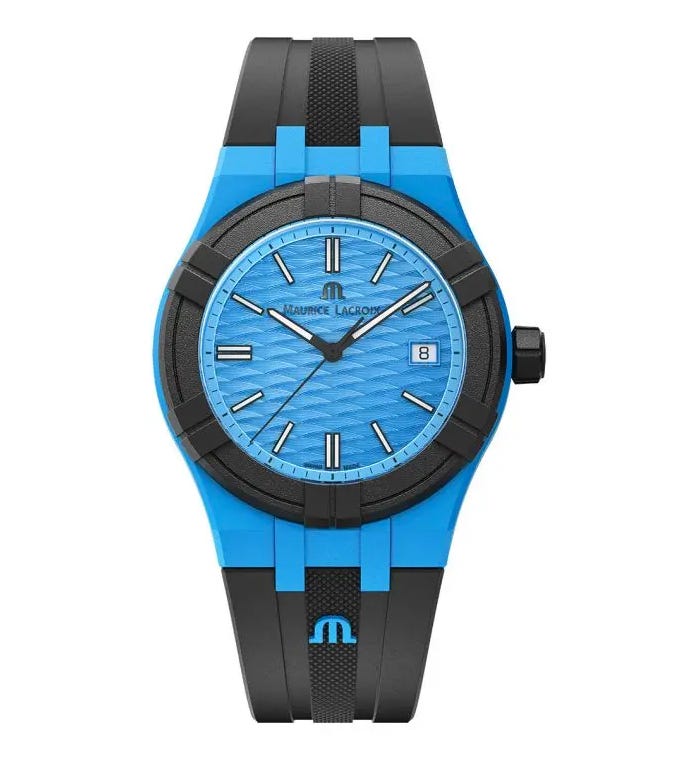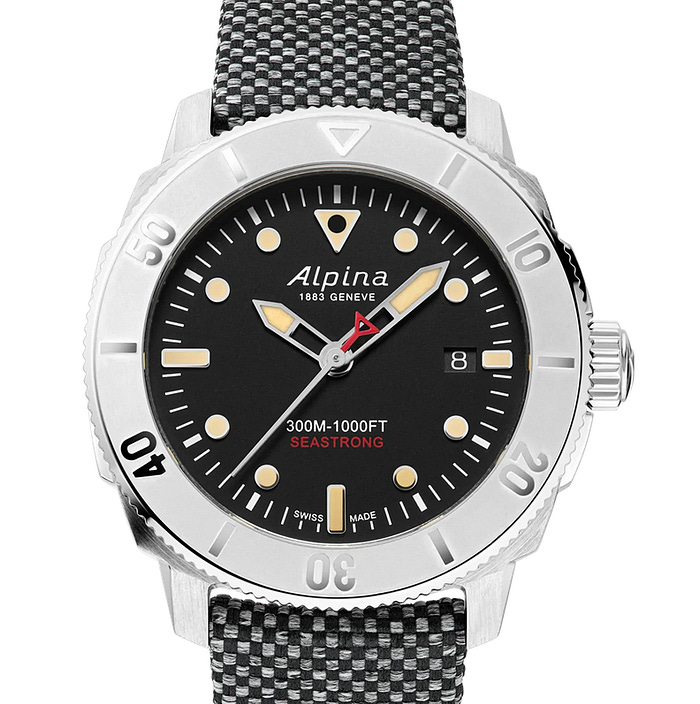Although the theme of sustainability has clearly gained momentum in recent years, the Swiss watch sector continues to display a heterogeneous stance on the topic spanning from Greenwashing, to complete lack of communication and transparency, to comprehensive adoption of sustainability practices. The perception is clear however: progress has been made and there is no going back to the old ways.
The World Wildlife Fund Environmental Rating and Industry Report of 2018 reported that several Swiss luxury brands were not meeting good environmental standards and that in fact, they did not seem to worry about their potential environmental impact and the lack of transparency in their sustainability practices.
The WWF study described the significance of the environmental impact of the luxury watch sector as bigger than might be apparent at first glance, mainly due to the impact on natural ecosystems caused by the sourcing of raw materials and Gold and on the lack of transparency on the carbon footprint generated by the sector‘s supply chains (Fig. 1).
The study highlighted the important role played by the Swiss luxury watch sector which becomes obvious when we consider that half of the 20 largest companies are headquartered in Switzerland and 17 of them have their production centers located in the country, making Switzerland the largest exporter of watches in the world. Further, over half of the global demand for Gold comes from the watch and jewelry sector and between 60 and 70% of globally mined gold travels through Switzerland to be refined.
But why should watch brands care about sustainability? What is the industry’s progress up to date? And what role should consumers play in influencing brands’ performance in sustainability? These are the questions that we will address in this article.
Fig. 1 — The most relevant materials found in a watch
Luxury watches becoming greener
There are comforting signals of improvement since 2018. A consumer visiting today the websites of the brands that were part of the WWF study in 2018 would notice the considerable progress made in improving the communication of sustainability objectives and roadmaps to reduce their environmental impact. For several of these brands we now know that they:
Have a dedicated page for sustainability and publish a sustainability report, in accordance with international reporting standards;
Are members of the Responsible Jewelry Council (RJC) and are certified against the Council’s Code of Practices (CoP). Some of the brands are also certified against the RJC Chain of Custody standards (see Note 1);
Report on Greenhouse Gas Emissions (GHG) measurements and on their targets for carbon footprint reduction;
Are active in preserving the environment and promoting biodiversity. Efforts in this area are focused on brands’ headquarters, production sites and boutiques and consist in the use of 100% renewable energy, the use of solar panels and circular water systems, chemical wastewater and scrap metals being disposed by independent third parties, the elimination of single-use plastic bottles, and the availability of sustainable transport for employees;
Publicly report their compliance with international standards on the trade of diamonds thus committing to the removal of conflict diamonds from their supply chains and to their handling in accordance with universal principles of human rights, labor rights, anti-corruption and anti-money laundering.
Circularity in luxury watches
In recent years, leading the way in sustainability are several brands and start-ups which have invested in the application of the circular economy principles in their production processes (Note 2: The Circular Economy Explained). Below are three examples of luxury watch brands that have implemented innovative approaches in the use of recycled materials in order to reduce their environmental impact.
ID Geneve: Circular One
Swiss startup ID Geneve describes its new concept watch Circular One (Fig. 2) as a self-winding mechanical watch fully integrated in the circular economy: the world’s first watch with a 100% recycled high quality stainless steel case, made from watchmaking and medical waste collected and melted within a 200 Km radium in the Jura region. In October 2021, only a year after its founding, ID Geneve won the Swiss luxury innovation award for its new concept watch Circular One.
The caliber of the Circular One is made from refurbished used (ETA) movements that have been disassembled, cleaned, reassembled and tested. The straps used for the Circular One are made from vegan textile made from 80% grape pomace residue, a waste from the wine industry. In 2022, ID Geneve launched a new strap collection called “Treekind ‘’, entirely made from green waste and fully compostable at the end of its life cycle. The straps are free of plastic, use no synthetic dyes, and do not require the extraction of raw materials. In 2022, the company also launched new packaging for its watches made from seaweed biomass which is also 100% home compostable and biodegradable.
Fig. 2 — The “Circular One”
Maurice Lacroix: Aikon #tide
In 2022, Maurica Lacroix issued a new collection of watches called Aikon #tide (Fig. 3) that uses an innovative upcycled composite for the case, bezel, case back, crown, and buckle. The Aikon #tide was realized in partnership with Swiss company Tide Ocean SA, a world leader in the upcycling of plastic waste from the ocean (the company has patented the technology for recycling plastic waste). The Aikon #tide project involved the collection of plastic bottles surrounding islands in Thailand, Philippines, and Indonesia. Sorted, shredded into flakes, washed and compacted close to the point of collection, the material was then compounded into smaller granules and amalgamated into upcycled plastic, which was combined with glass fiber using technology developed in Switzerland. The resulting material is twice as hard and five times stronger than plastic, with a carbon footprint that is six times less than PET (i.e. plastic which is not single-use, but 100% recyclable, versatile, and made to be remade).
Fig. 3: The Aikon #tide
Alpina: Seastrong Diver 300 Calanda
Alpina launched the Seastrong Diver 300 Calanda (Fig. 4) in 2022. The watch is made from Thyssen Krupp’s ultra-high-grade recycled PuReSteel, which is certified 100% recycled, and boasts one of the highest levels of quality available on the market and is primarily sourced from the maritime shipping industry. One tonne of recycled steel saves 70% of its weight in energy, and 1.5 times its weight in CO2; steel is in fact the most recycled material in the world. The recycled steel is marked invisibly and its traceability is guaranteed at all times. 100% recycling is ensured by collecting raw materials (scrap metal) under controlled conditions and in compliance with traceability, the use of alloying elements from non-conflict areas, and the use of C02-neutral melting furnaces.
Fig. 4: The Seastrong Diver 300 Calanda
Preparing for Generation Z
The importance that consumers give to the topic of sustainability has grown in recent years but it is not the only factor influencing consumer behavior. In a 2022 survey by DeLoitte, when asked what factors they would consider important when deciding to buy a watch, the majority of consumers indicated the price/ value ratio as the deciding factor, followed by the aesthetics of the watch.
However, when asked to choose between two watches where one brand focused on sustainability whereas the other focused on its image, for 32% of the respondents sustainability was indeed a deciding factor, whereas for 32% of them sustainability was not an important factor if they liked the watch, and for 21% of the respondents brand image was the more important factor when buying a watch.
The Deloitte study also reported on the views from industry senior executives on the primary reasons for brands to invest more on sustainability. Changing consumer behavior and a desire to reduce the carbon footprint of the company were the two most important factors for surveyed senior executives. When compared to a similar survey completed in 2021, trends such as changing consumer behavior, embedding sustainability in the company strategy, and tracking and measuring sustainability data for reporting showed the largest increases in importance.
Both industry executives and consumers were reported to consider the ethical sourcing of materials and human rights as the two most important aspects of sustainability for the watch industry. Other aspects such as the use of recyclable packaging, reporting on sustainability, and donating to environmental and social causes were deemed less important than ethical considerations in sourcing.
The power of consumer behavior
According to a 2022 study by consulting firm Bain & Company, Generation Z and Millennials are expected to account for 70% of the global personal luxury goods market by 2025, and they are redefining the meaning of the luxury experience. For these two generations, the new luxury watch experience is about environmental responsibility and the pleasure of knowing that they are consuming a sustainable product, a watch with a minimal impact on the environment and society. Generation Z and Millennials prefer purchasing from brands that can evidence their engagement in sustainable manufacturing, ethical business practices, and pro-social messages.
As consumers, we have the ability to drive the adoption of sustainable practices in the luxury watch sector. We can choose to buy our watches from the Certified Pre-Owned Market (CPO) and contribute to the reusing of watches and to the lengthening of their product life. We can opt for the “to use vs to own” consumption model and lease luxury watches instead of buying them. There are several companies nowadays that offer this service and effectively give the chance to wear different watches for different occasions and enjoy variety, at an affordable price. We can pre-order watches thus supporting a production model that avoids unsustainable production levels where watches are produced only if there is someone who is ready to buy them. Pre-ordering economy is being advocated as an economic efficiency solution to modern environmental problems.
Further, as consumers we can choose to buy our watches only from those brands that are transparent about their carbon footprint in their supply chains and on the origin of their materials (e.g. gold, diamonds) and that are able to evidence their compliance with international standards through certification. We can choose to buy our watches from those brands that use recycled materials including precious metals.
The purchase of a luxury watch needs to carry with it the notion of a meaning that goes beyond simply experiencing an emotion, and that meaning is the healing of a planet, our planet, with the goal of one day making it a healthy planet, again. It is not unimaginable to think that five to ten years from now no one will dare to showcase on his/her wrist a watch that was produced using unsustainable business practices which somewhat contributed to a dying planet. Food for thought.
Note 1: The Responsible Jewelry Council (RJC) Explained
The Responsible Jewelry Council is the world’s leading sustainability standard setting organization for the jewelry and watch industry.
The RJC Code of Practices (COP) defines the responsible ethical, human rights, social and environmental practices that all certified RJC members must adhere to.
The Chain of Custody (CoC) Standard aims to support responsible sourcing of precious metals in the jewelry supply chain. RJC CoC Certified entities are audited to ensure that CoC precious metals are conflict‐free as a minimum, and responsibly produced (i.e. in observance of human rights, labor standards, environmental impact, and business ethics principles).
Note 2: The Circular Economy Explained
Global consumption of natural resources has more than tripled since the 1970s. The news reminds us daily of the instability of the planet’s climate and its ecosystems and that we are dangerously testing the resilience of the planet we live on.
Since the industrial revolution, human society has been operating a linear economy model, also known as the “Take”, “Make”, and “Waste” model. With this model, we extract scarce resources from the earth (energy and materials), we refine them, we produce goods and services, sell them, use them, and eventually often dispose of them in a short span of time while creating waste and with little consideration of the impact that this waste has on the planet’s environment.
A circular economy is a model of production and consumption, which involves sharing, leasing, reusing, repairing, refurbishing and recycling existing materials and products, as long as possible. Circular Economy aims to tackle global challenges such as climate change, biodiversity loss, waste, and pollution by emphasizing the design-based implementation of the three principles of the model: eliminating waste and pollution, circulating products and materials, and the regeneration of nature.






